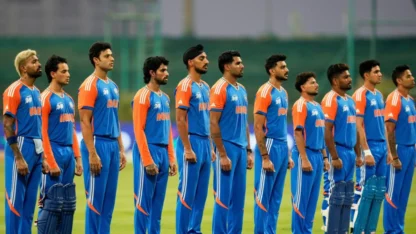As athletes worldwide gear up for the Paris Paralympics, which kicks off on August 29, a surprising rule has emerged that could potentially see some stars disqualified before they even compete. The International Paralympic Committee (IPC) strictly enforces a regulation that forbids Paralympians from displaying tattoos of the Olympic rings—a rule that could cost them their chance to compete.
Why the Tattoos rule exists
Unlike the International Olympic Committee (IOC), which allows athletes to showcase their Olympic-themed tattoos, the IPC has a different stance. The reasoning behind this rule is tied to the IPC’s strict policies on body advertising. According to the IPC, “Body advertising is not allowed in any way whatsoever, and that includes the Olympic rings.” This rule is rigorously enforced, with no exceptions.
Josef Craig Incident: A Cautionary Tale
British Paralympic swimmer Josef Craig became a notable example of this rule in action. In the lead-up to the Rio Paralympics in 2016, Craig competed at the IPC Swimming European Championships in Portugal. Despite winning his heat in the S8 100m freestyle final, Craig was disqualified because his Olympic rings tattoo was visible beneath his Team Great Britain lion’s head on his chest. The IPC’s decision left Craig stunned, but it served as a stern reminder to all athletes about the importance of adhering to the rules.
Craig later covered up his tattoo and went on to win a bronze medal at the Rio Paralympics. However, the incident highlighted the strict enforcement of the IPC’s policies and the potential consequences of overlooking them.
Difference in Rules: IPC vs. IOC
While the IPC maintains its strict stance on body advertising, including Olympic-themed tattoos, the IOC is more lenient. For example, Australian swimmer Kyle Chalmers proudly displayed his Olympic rings tattoo while competing recently, without any repercussions. The IOC permits such tattoos as long as they do not advertise a product.
What this means for Paris 2024
As the Paris Paralympics approach, athletes are reminded once again of the importance of complying with the IPC’s rules. Any athlete found displaying an Olympic rings tattoo without proper coverage could face disqualification, regardless of their performance in the competition.
Paralympics Australia has yet to comment on the enforcement of this rule, but it’s clear that the IPC is taking a firm stance. For athletes, this means being vigilant about their appearance and ensuring that their tattoos, if any, are appropriately covered to avoid any potential issues.
Stakes are high for Paralympians
The stakes are high for Paralympians who have trained for years to compete on the world stage. A simple oversight, such as failing to cover a tattoo, could lead to disqualification and the loss of a lifetime opportunity. As the countdown to Paris 2024 continues, athletes and teams must ensure they are fully aware of and compliant with all IPC regulations to avoid any unexpected disqualifications.
Editor's Pick
 Cricket
Focus on Suryakumar Yadav & Shubman Gill in Lucknow with just 7 matches remain for T20 World Cup
Cricket
Focus on Suryakumar Yadav & Shubman Gill in Lucknow with just 7 matches remain for T20 World Cup

































































